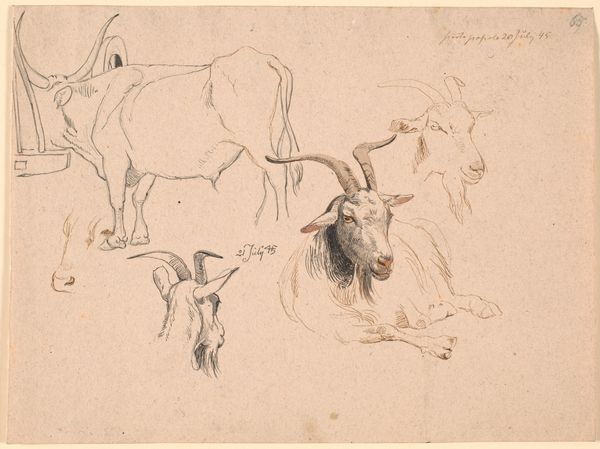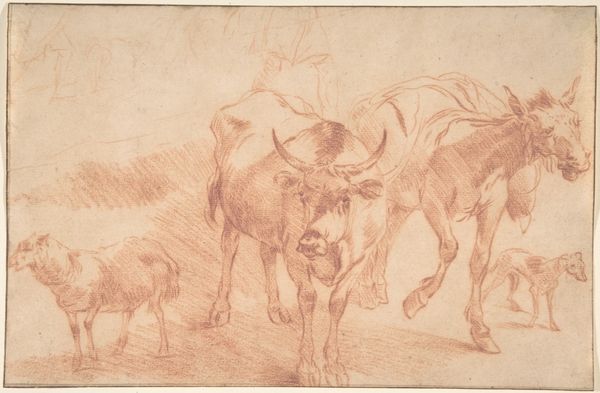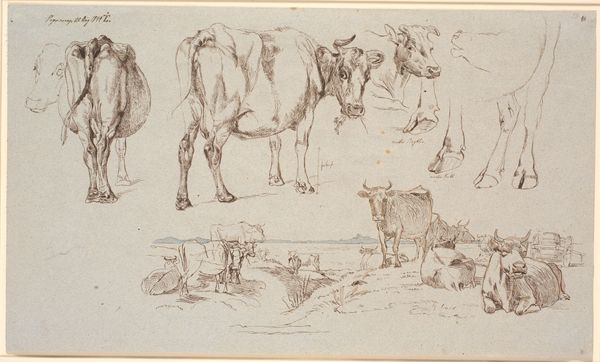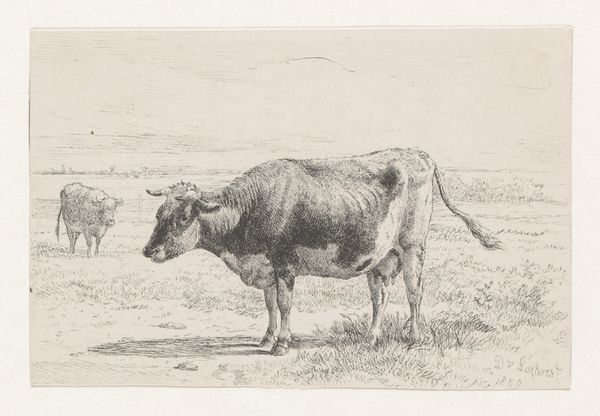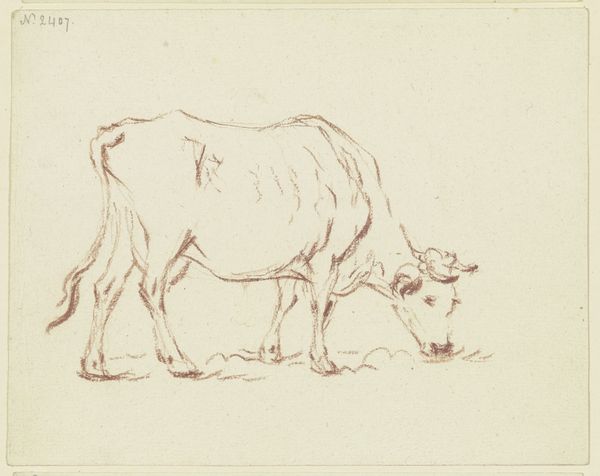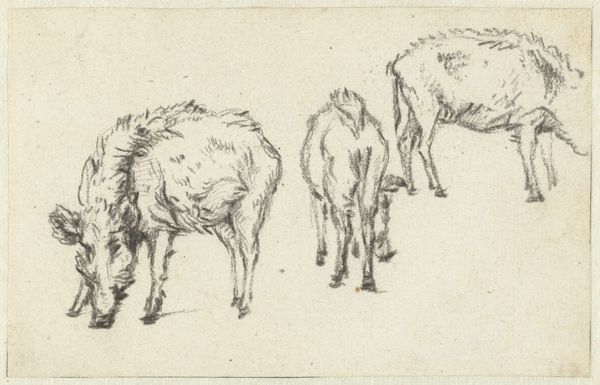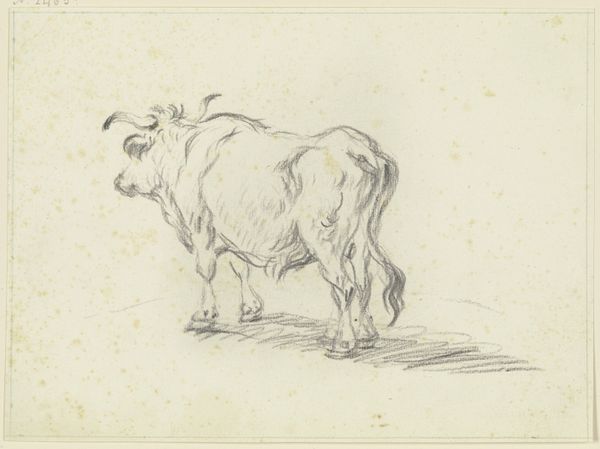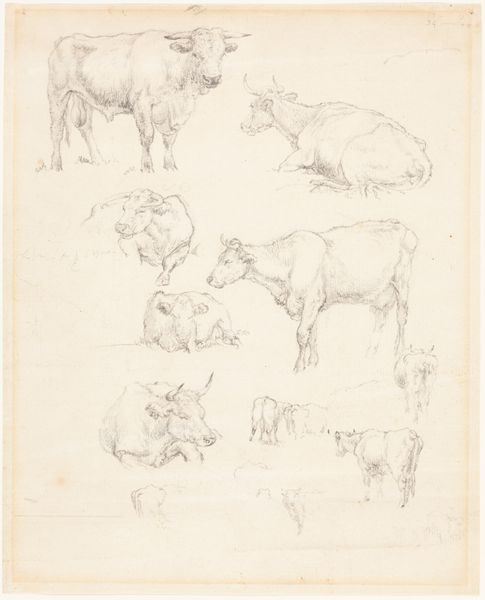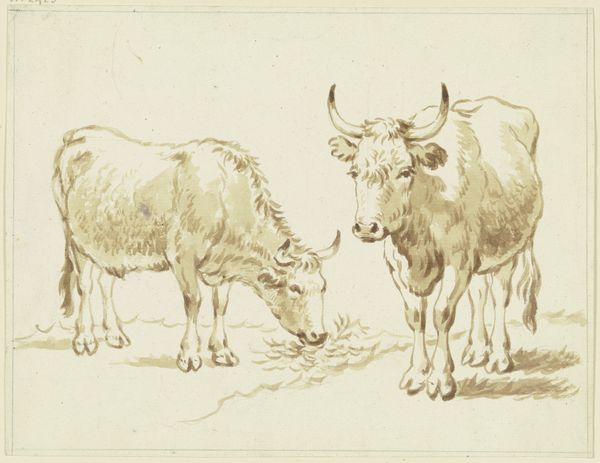
drawing, watercolor, pencil
#
drawing
#
pencil sketch
#
landscape
#
watercolor
#
pencil drawing
#
pencil
#
sketchbook drawing
#
watercolor
#
realism
Dimensions: 294 mm (height) x 530 mm (width) (bladmaal)
Curator: Immediately, I'm struck by the animal's vulnerability rendered through the softness of the medium, the sketches exude a quiet and pensive quality. Editor: Indeed. Let’s contextualize this intriguing set of animal studies. What we’re seeing is "Kv\u00e6gstudier. T.v. tyren Grev Geert" or "Cattle Studies. To the left the bull Grev Geert," a drawing by Johan Thomas Lundbye dating from 1844. The medium is primarily pencil and watercolor on paper. Curator: Considering the context of 1844, the selection of watercolor is critical. It emphasizes the artwork's ties to direct, observational sketches made outside, connecting Lundbye to larger discussions around landscape practices and recording specific breeds, perhaps in relationship to agricultural developments. Editor: I agree that we must account for this drawing being composed by pencil. Furthermore, these kinds of bucolic images became implicated in national romanticism which idealized peasant life. To what extent are these sketches intertwined with ideas of Danish identity and rural virtue during this period? Curator: I’m drawn to how Lundbye is clearly focused on capturing form, weight, and texture of the animal with so little artifice. These drawings avoid the traditional academic processes of building an image; they focus on the tactile realities of rural labor. How does that contribute to their meaning, particularly related to industrialization’s impact on agricultural labor? Editor: And we must account for Lundbye’s project alongside a concurrent societal romanticizing of the bovine form. This representation idealizes the working bull. What tensions are present in presenting animal bodies in an era of agrarian exploitation? What does it mean to make the working-class animals objects of beauty? Curator: It seems these material sketches capture something about that transformation from sustenance agriculture towards something we might recognize now as factory farming—do we see a document about a shifting societal structure as expressed through artistic production? Editor: Through careful study, Lundbye encourages an interdisciplinary reading of Danish society as expressed via this bull and the role of the agriculture industry as a crucial part of national romanticism. Curator: Ultimately, considering Lundbye's working process forces us to question where "art" begins and "labor" ends when depicting these vital resources, doesn't it? Editor: It demands, indeed, an assessment of that very relationship by providing an artifact that allows for such a contemporary dialogue regarding society's ever changing relationship with identity.
Comments
No comments
Be the first to comment and join the conversation on the ultimate creative platform.
